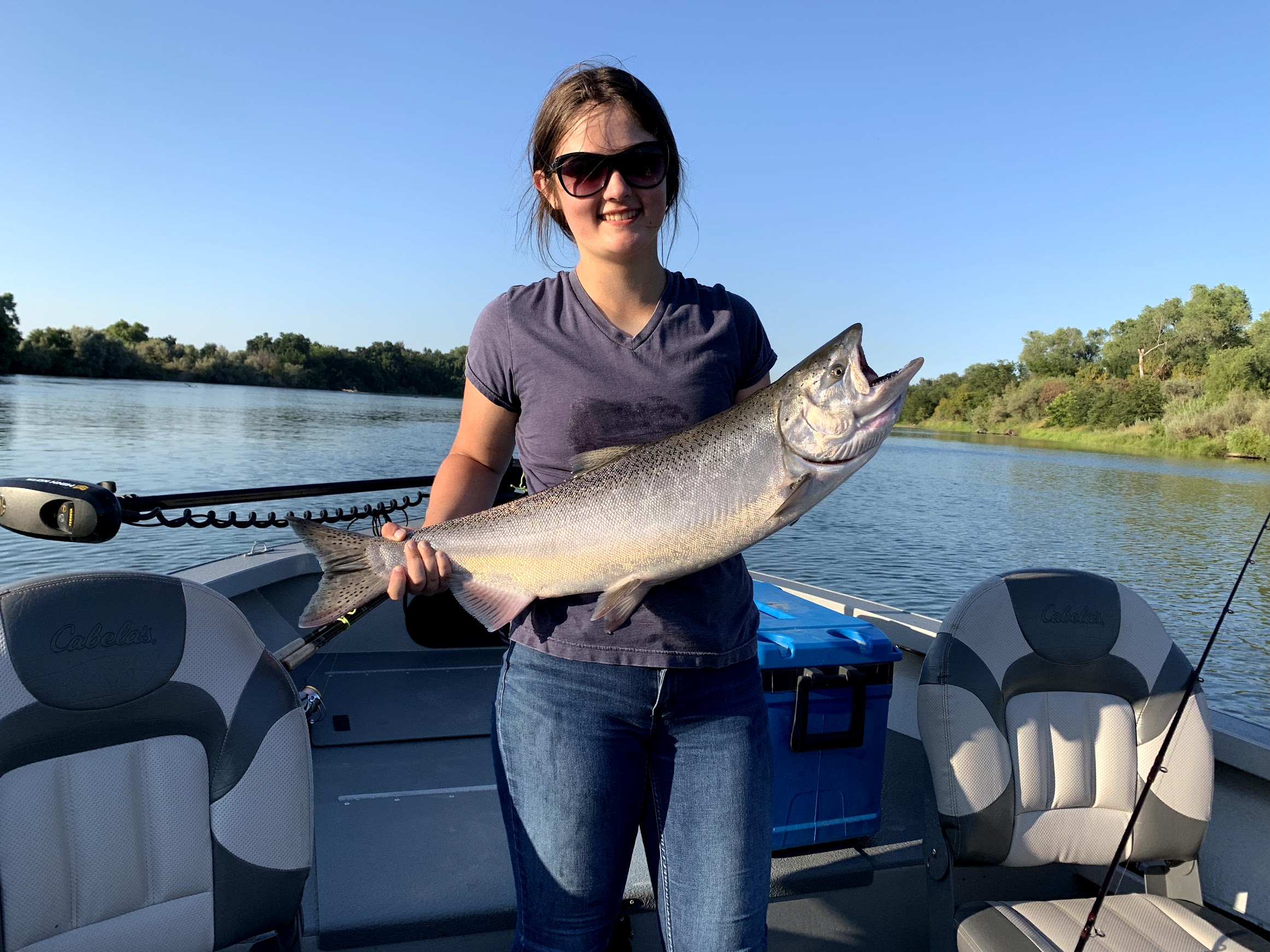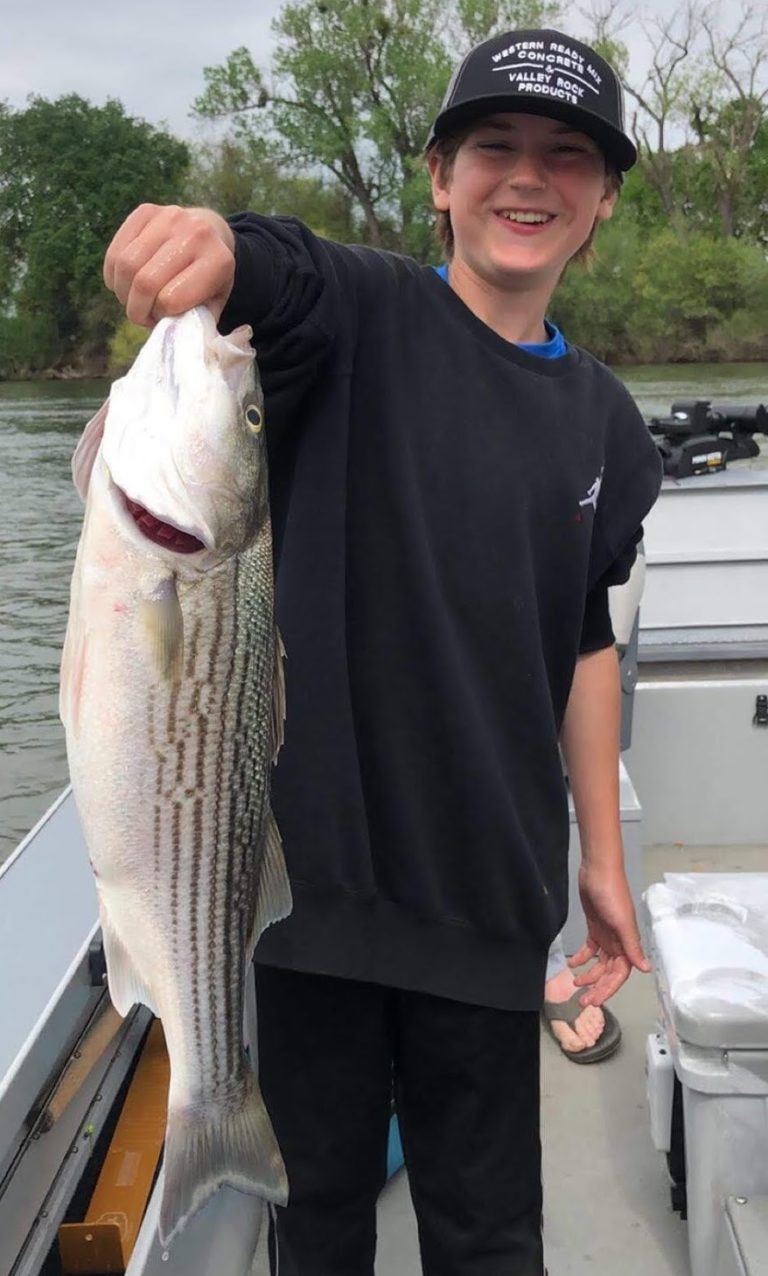What We Fish
Salmon
Chinook Salmon are Pacific salmon that are an anadromous species that migrate upstream as adults to spawn in freshwater, with the spawn migrating back to the ocean as juveniles to mature.
Salmon are semelparous, meaning they only spawn once in their lifespan and die shortly after. Death after spawning is due to the arduous migration that leads to an excessive utilization of energy and reserves. Salmon prefer cooler waters, preferably below 25 degrees Celsius.
The Sacramento River hosts some of the largest king salmon runs on the West Coast, with four recognized annual Chinook runs in Spring, Winter, Fall and Late Fall. The Fall and Late Fall are the Chinook runs lasting from July to December that can be fished in the Sacramento River. Chinook Salmon migrating in the Fall and Late Fall runs spawn from early October to late December and January to mid-April, respectively. There are no size limitations on the harvesting of salmon from the Sacramento River.


Striped Bass
Striped bass, also known as Stripers, are an anadromous species, similar to salmon, migrating from the ocean to freshwater to spawn. Unlike salmon, stripers do not have a known migratory pattern. Population movements are thought to be dictated by environmental factors, such as food availability and temperatures.
Stripers are capable of spawning numerous times in their lifespan, their first spawn occurring at 4-5 years of age. Stripers typically begin to spawn in the Spring between April and June when water temperatures increase.
Striped Bass can be fished during all seasons in the Sacramento River and are legal for harvest at a length of 18 inches or more. Due to their discretionary migration patterns anglers have had success catching stripers at unexpected times. That being said, there are peak times for Striped Bass fishing, and those begin in early Spring.
Sturgeon
White Sturgeon are the largest freshwater fish native to the West coast of North America. At maturity, sturgeon can range from 5-20ft in length! White Sturgeon begin to spawn at approximately 10-16 years of age, but can live to be over 100, continuing to spawn every 2-4 years.
Although White Sturgeon are considered to be an anadromous species, and can sometimes be found in the ocean, they predominately remain in large rivers and their respective estuaries. During the spawning season from February to June, the White Sturgeon will enter large river waters from the estuary to spawn and often migrate to the Delta after spawning.
Green Sturgeon are another species native to the West coast of North America, but are known to spend most of their lives in marine waters. Green Sturgeon are not legal to harvest.
White Sturgeon can be fished for during all seasons and are legal for harvest at a length of 40-60 inches fork length. The legal limit is one sturgeon per angler and no more than three sturgeon per angler annually.


Shad
American Shad were first planted in the Sacramento River in 1871. American Shad range in length from 16-30 inches and are typically between 4-7 lbs, with a life span of approximately 10 years.
American Shad are an anadromous fish and begin their population movement to spawn up river in the early months of Spring, with migration reaching it’s peak in June. The best time to fish the Shad run is during late April thru early July.
American Shad have been known to be ever present in the river systems, even not during migratory seasons, and can be fished for during all seasons with a legal limit of 25 fish per angler.